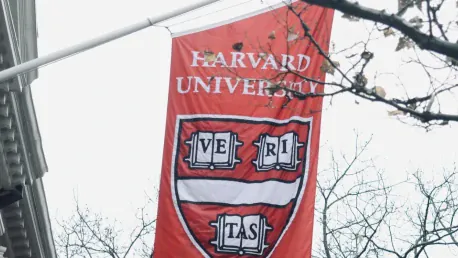Harvard University has announced a significant expansion of its financial aid programs, making higher education more accessible to students from families with annual incomes of $200,000 or less. This initiative aims to support students from diverse backgrounds and ensure a more inclusive learning environment. This decision aligns Harvard with other prestigious institutions like the University of Pennsylvania, which had similarly expanded their financial aid packages to support students from middle-income families.
Harvard’s Expanded Financial Aid Initiative
Comprehensive Support for Low-Income Families
The new financial aid plan offers full coverage of all billed expenses for students whose families earn $100,000 or less annually. This includes tuition, room and board, fees, travel expenses, winter wear, and health insurance if needed. By alleviating the financial burden, Harvard hopes to attract more applicants from economically disadvantaged backgrounds, thereby broadening the socio-economic diversity of its student body.
For families with annual incomes between $100,000 and $200,000, Harvard will cover the full cost of tuition and may include room and board along with other essential fees, depending on specific financial circumstances. This step significantly lightens the financial strain on families who fall in the middle-income bracket, many of whom find it challenging to fund an education at a prestigious institution like Harvard despite earning moderate incomes.
Impact on Middle-Income Families
This policy shift extends financial support to middle-income families, many of whom struggle with the high costs of attending elite institutions. Harvard’s initiative could potentially enable 86% of American families to qualify for some form of financial aid. This expanded financial aid program could pave the way for thousands of students to access the unparalleled educational opportunities that Harvard offers, which might have been economically unfeasible for many.
Educators and policymakers view this move as a crucial step towards bridging the gap between affluent and less privileged families, ensuring more students have the opportunity to attend top-tier universities. Harvard President Alan Garber has emphasized that expanding financial aid not only democratizes access to education but also enriches the learning environment, as it brings together students from various socio-economic backgrounds.
Context and Timing of Harvard’s Decision
Response to Supreme Court Ruling and Federal Policies
Harvard’s decision follows the 2023 Supreme Court ruling banning the use of racial preferences in college admissions and the previous administration’s attempts to cut federal funding for higher education. These factors have heightened concerns about opportunities for underserved communities. The timing of these financial aid expansions is particularly pivotal, as it addresses the growing inequalities in access to top-tier education that have been exacerbated by recent policy changes.
According to a 2024 report by the Rennie Center for Education, Research, and Policy, some colleges, including Harvard, have seen declines in admission rates from these communities since the ruling. Harvard aims to counteract these trends through expanded financial aid. The initiative intends to ensure that higher education remains within reach for all students, irrespective of the financial or community challenges they may face.
Financial Implications and Commitment
Starting with the 2025-26 academic year, Harvard plans to increase its financial aid budget to $275 million, ensuring continued support for eligible students. This significant financial commitment highlights Harvard’s dedication to maintaining educational accessibility. This increased budget underscores the university’s pledge to ensure that financial constraints do not bar talented students from attaining an elite education.
Councilmembers and advocates highlight that incomes of $100,000 or $200,000 are insufficient to cover all costs at Harvard, emphasizing the importance of the financial aid expansion in making elite education attainable for more families. Philadelphia City Councilmember Anthony Phillips remarked that this initiative is crucial in bridging the financial gap that makes higher education accessible to a more extensive range of students.
Broader Trends in Higher Education
Initiatives by Other Prestigious Institutions
Harvard’s move aligns with efforts by other top universities like the University of Pennsylvania, which has also broadened its financial aid programs. Schools such as the California Institute of Technology and the University of North Carolina have implemented similar initiatives to enhance affordability. The extension of financial support by these institutions signifies a collective effort within elite academia to democratize access to education.
The University of Pennsylvania’s new Quaker Commitment plan, starting in 2025-26, extends free tuition eligibility to families earning between $140,000 and $200,000 annually, continuing its long-standing commitment to financial aid. Penn President Larry Jameson noted that this package is intended to consolidate the university’s dedication to providing opportunities and leadership in financial aid. Such measures illustrate a broader trend among premier universities to ensure that financial barriers do not impede access to quality education.
Ensuring True Accessibility and Inclusivity
Harvard University has recently announced a significant expansion in its financial aid programs. This effort is designed to make higher education more attainable for students coming from families with annual incomes of $200,000 or less. The primary goal of this initiative is to provide better support for students from varied backgrounds, thereby fostering a more diverse and inclusive educational environment. This progressive decision places Harvard in line with other elite institutions, such as the University of Pennsylvania, which have similarly enhanced their financial aid packages to benefit students from middle-income families. The move underscores Harvard’s commitment to broadening access to its prestigious programs, ensuring that financial limitations do not hinder talented individuals from pursuing their academic ambitions. With these expanded financial aid options, Harvard aims to break down economic barriers and enable a richer, more vibrant student community that reflects a wide range of experiences and perspectives.









